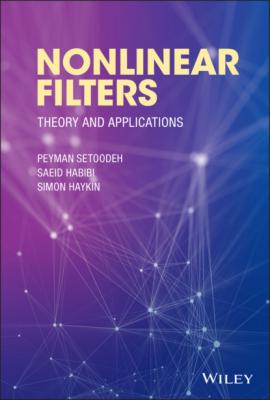Nonlinear Filters. Simon Haykin
Чтение книги онлайн.
Читать онлайн книгу Nonlinear Filters - Simon Haykin страница 33
 time
time A filter uses the inputs and available observations up to time instant
In the prediction stage, the Chapman–Kolmogorov equation can be used to calculate the prediction density,
When a new measurement
where the normalization constant in the denominator is obtained as:
(4.9)
The recursive propagation of the state posterior density according to equations (4.7) and (4.8) provides the basis of the Bayesian solution. Having the posterior,
Minimum mean‐square error (MMSE) estimator(4.10) This is equivalent to minimizing the trace (sum of the diagonal elements) of the estimation‐error covariance matrix. The MMSE estimate is the conditional mean of :(4.11) where the expectation is taken with respect to the posterior, .
Risk‐sensitive (RS) estimator(4.12) Compared to the MMSE estimator, the RS estimator is less sensitive to uncertainties. In other words, it is a more robust estimator [49].
Maximum a posteriori (MAP) estimator(4.13)
Minimax estimator(4.14) The minimax estimate is the medium of the posterior, . The minimax technique is used to achieve optimal performance under the worst‐case condition [50].
The most probable (MP) estimator(4.15) MP estimate is the mode of the posterior, . For a uniform prior, this estimate will be identical to the maximum likelihood (ML) estimate.(4.16)
In